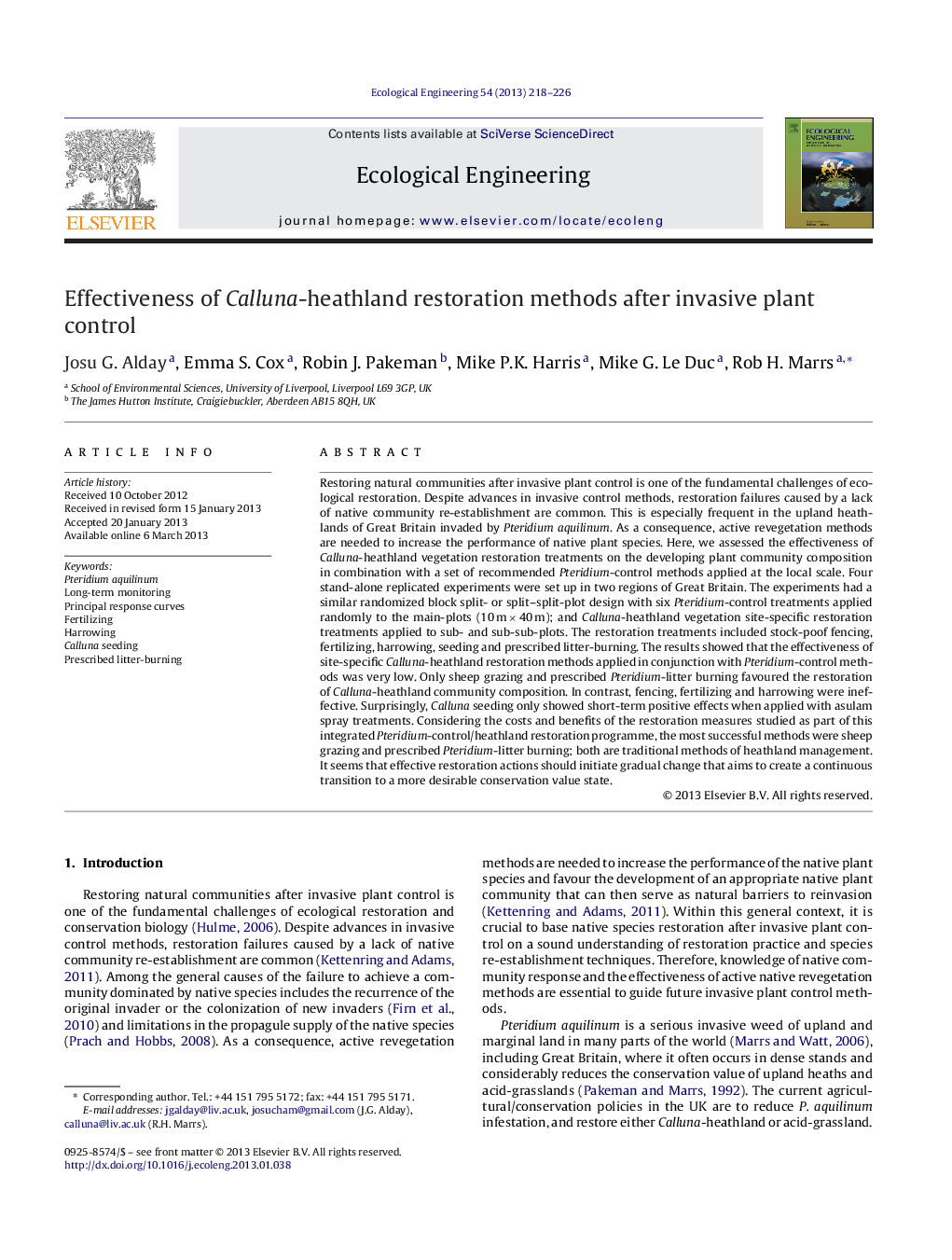| Article ID | Journal | Published Year | Pages | File Type |
|---|---|---|---|---|
| 4389811 | Ecological Engineering | 2013 | 9 Pages |
Restoring natural communities after invasive plant control is one of the fundamental challenges of ecological restoration. Despite advances in invasive control methods, restoration failures caused by a lack of native community re-establishment are common. This is especially frequent in the upland heathlands of Great Britain invaded by Pteridium aquilinum. As a consequence, active revegetation methods are needed to increase the performance of native plant species. Here, we assessed the effectiveness of Calluna-heathland vegetation restoration treatments on the developing plant community composition in combination with a set of recommended Pteridium-control methods applied at the local scale. Four stand-alone replicated experiments were set up in two regions of Great Britain. The experiments had a similar randomized block split- or split–split-plot design with six Pteridium-control treatments applied randomly to the main-plots (10 m × 40 m); and Calluna-heathland vegetation site-specific restoration treatments applied to sub- and sub-sub-plots. The restoration treatments included stock-poof fencing, fertilizing, harrowing, seeding and prescribed litter-burning. The results showed that the effectiveness of site-specific Calluna-heathland restoration methods applied in conjunction with Pteridium-control methods was very low. Only sheep grazing and prescribed Pteridium-litter burning favoured the restoration of Calluna-heathland community composition. In contrast, fencing, fertilizing and harrowing were ineffective. Surprisingly, Calluna seeding only showed short-term positive effects when applied with asulam spray treatments. Considering the costs and benefits of the restoration measures studied as part of this integrated Pteridium-control/heathland restoration programme, the most successful methods were sheep grazing and prescribed Pteridium-litter burning; both are traditional methods of heathland management. It seems that effective restoration actions should initiate gradual change that aims to create a continuous transition to a more desirable conservation value state.
► Effectiveness of Calluna-heathland vegetation restoration treatments were assessed. ► Sheep-grazing and prescribed litter-burning restored community composition. ► Fencing, fertilizing and harrowing were ineffective. ► Effective restoration actions initiated gradual changes to create continuous changes.
